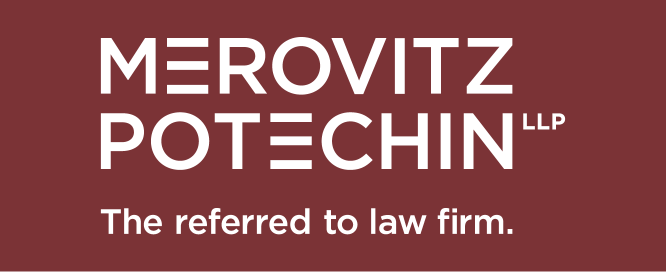The recent decision of the Supreme Court of Canada in Orphan Well Association v. Grant Thornton Ltd., 2019 SCC 5 clarified the extent of a licensed insolvency trustee’s obligation when it comes to environmental cleanup obligations at least in the Province of Alberta. In doing so, the Supreme interpreted s.14.06(4) of the Bankruptcy and Insolvency Act, R.S.C. 1985, c.B.3 (the “BIA”) and ultimately held that its protection only extended to the licensed insolvency trustee itself and not to the bankrupt estate.
In Alberta, in order to be granted a licence to extract, process or transport oil, a company must assume end‑of‑life responsibilities for plugging and capping oil wells, dismantling surface structures and restoring the surface to its previous condition (known as “abandonment” and “reclamation”). In 2009, Redwater Energy Corporation (“Redwater”) was granted a licence by the Alberta Energy Regulator (“Regulator”). In 2014, Redwater began to experience financial difficulties and its secured creditor, Alberta Treasury Branches (“ATB”), brought an application to court wherein Grant Thornton Limited (“Grant”) was ultimately appointed as Redwater’s receiver.
Upon being advised of the receivership, the Regulator delivered a letter to Grant advising it that the Oil and Gas Conservation Act, R.S.A. 2000, c.O-6 (the “OCGA”) and the Pipeline Act, R.S.A. 2000, c.P-15 included both receivers and trustees in the definition of “licensee.” Therefore, the Regulator indicated that, notwithstanding the receivership, Redwater remained obligated to comply with its abandonment obligations and that Grant, as receiver, was responsible for fulfilling these obligations prior to it distributing any funds to Redwater’s creditors. Furthermore, the Regulator indicated that it would not transfer any of Redwater’s licenses unless it was satisfied that both the transferor and transferee would be in a position to fulfill all regulatory obligations.
Grant ultimately determined that the cost of the end-of-life obligations for Redwater’s spent wells would exceed the amount it could receive on the sale of Redwater’s productive wells. Consequently, Grant advised the Regulator that it was only taking possession and control of Redwater’s 17 most productive wells, 3 associated facilities and 12 associated pipelines. Grant also maintained that it was not obliged to fulfill any regulatory requirements in relation to the assets it was not taking possession and control of.
As a result, the Regulator issued orders requiring Redwater to suspend and abandon the assets Grant was not taking control of. It also maintained that once abandonment had taken place, the surface needed to be reclaimed. The Regulator then filed an application for a declaration that Grant’s renunciation of the assets it did not take control of was void, an order requiring Grant to comply with the orders it had issued and an order requiring Grant to fulfill the statutory obligations in relation to abandonment, reclamation and remediation of all of Redwater’s licensed properties. However, it did not seek to hold Grant liable for these obligations beyond the amount of assets in Redwater’s estate. In turn, Grant sought an order the Regulator could not prevent it from transferring the licenses for the assets it took control of.
Ultimately, Redwater was adjudged a bankrupt and Grant was appointed as trustee in bankruptcy of Redwater’s estate.
As the Supreme Court noted, the issue on the appeal arose from the intersection of Alberta’s environmental legislation and the BIA and the doctrine of paramountcy. As the Supreme Court also noted, the BIA provides that where there is a genuine conflict between the BIA and provincial legislation concerning property and civil rights, the BIA prevails.
There are two manners in which provincial and federal law can conflict. One is by way of operational conflict which arises where complying with makes it impossible to comply with the other. The second is by frustration of purpose where the operation of provincial legislation is incompatible with the purpose of federal legislation. Therefore, if Alberta’s environmental legislation that applied in the case conflicted either operationally with the BIA or with the purpose of the BIA, then the terms of the BIA would prevail.
Grant maintained that Alberta’s legislation was in operational conflict with the BIA in that it contained “trustee” in the definition of a “licensee.” As a result, the Regulator could force Grant to satisfy all of Redwater’s statutory obligations and liabilities despite the fact that it had disclaimed the assets it did not take control of and could not be held personally liable in accordance with s. 14.06(4) of the BIA. Grant also maintained that the Regulator’s use of its powers effectively re-ordered the priorities of the creditors as provided for in the BIA.
Ultimately, the majority of the court concluded that there was no operational conflict between Alberta’s legislation and the BIA. In doing so, the majority noted that s. 14.06(4) merely provides that the trustee is not personally liable for failure to comply with environmental orders or for the costs incurred by any person in carrying out the terms of such orders. However, s.14.06(4) did non make any mention of the liability of the bankrupt or the estate.
At para 75 of its decision, the majority court stated:
In my view, s.14.06(4) sets out the result of a trustee’s “disclaimer” of real property when there is an order to remedy any environmental condition or damage affecting that property. Regardless of whether “disclaimer” is understood as a common law power or as a power deriving from some other statutory source, the result of a trustee’s disclaimer of real property where an environmental order has been made in relation to that property is that the trustee is protected from personal liability, while the ongoing liability of the bankrupt estate is unaffected…
Given that s.14.06(4) dictates that “disclaimer” only protects trustees from personal liability…no operational conflict or frustration of purpose results from the fact that the Regulator requires GTL, as a “licensee”, to spend estate assets on abandoning the Renounced Assets.
With respect to Grant’s argument that the inclusion of trustees in the definition of licensee frustrated the purpose of s.14.06(2) and 14.06(4) of the BIA, the majority noted that the Regulator indicated that it would never attempt to hold a trustee personally liable and that it had not ever attempted to do so. Therefore, the majority was not prepared to hold that the theoretical possibility of frustration of purpose was sufficient to hold that there was in fact frustration of purpose.
With respect to Grant’s argument that the Regulator’s use of its powers effectively re-ordered the priorities of the creditors provided for in the BIA by requiring Grant to satisfy Redwater’s environmental liabilities ahead of the estate’s other debts, the majority held that it did not. In doing so, the majority made reference to the three-prong test in order to determine whether a claim is provable in bankruptcy. With respect to the first prong of the test and whether or not the Regulator was a creditor, the court held that a regulator that was enforcing a public duty is not a creditor of the corporation that is subject to that duty. In this case the Regulator did not stand to benefit financially from it enforcing Redwater’s obligations. Therefore, the Regulator was acting in the public interest and was not a creditor.
Even if it were determined that the Regulator was a creditor, then with respect to the third prong of the test, at paragraph 140 of its decision, the court noted that:
What a court must determine is whether there are sufficient facts indicating the existence of an environmental duty that will ripen into a financial liability owed to a regulator. In determining whether a non-monetary regulatory obligation of a bankrupt is too remote or too speculative to be included in the bankruptcy proceeding, the court must apply the general rules that apply to future or contingent claims. It must be sufficiently certain that the contingency will come to pass – in other words, that the regulator will enforce the obligations by performing the environmental work and seeking reimbursement.
In this case, the majority determined that it was not sufficiently clear that the contingency would come to pass.
The lesson: although trustees may not be personally liable to the extent of their own assets for complying with environmental orders, based upon the Supreme Court’s decision, they appear to be required, at least in Alberta, to comply with environmental cleanup orders using estate assets.









